Collapsed Cliff in the Grand Canyon Reveals Groundbreaking Discovery
The Grand Canyon is a fantastic attraction with much beauty to see! In this deep ravine, you wouldn’t think that a boulder would be one of the most fascinating discoveries to explore. But one geologist found an incredible discovery in a seemingly common rock.
He decided to take a photograph of his findings. The casual image changed what we know about Arizona and the prehistoric life that used to reside there.
Where It All Began: The Bright Angel Trail
Our story begins at Bright Angel Trail, the primary starting point for tourists exploring the Grand Canyon. This popular trail moves into the canyon itself, while running parallel to the edge, lowering in elevation some 4,000 feet for eight miles.
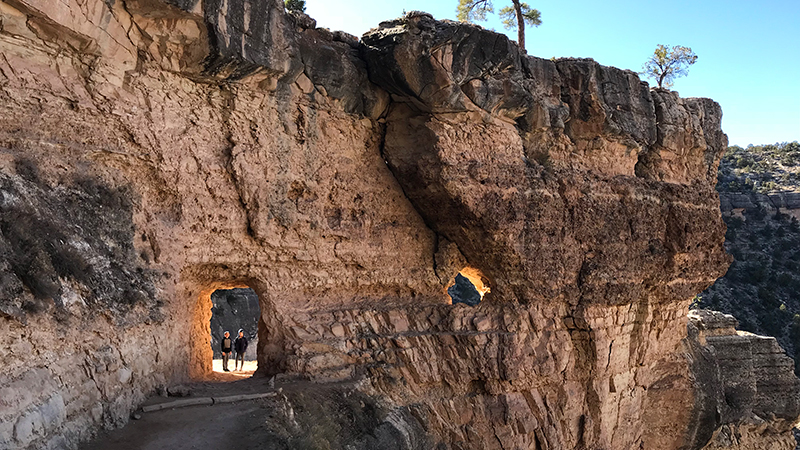
Source: Inspired Imperfection
A cliff face along this trail collapsed, releasing a boulder which seemed unremarkable. The massive, compacted rock dated back millions of years, well before the Grand Canyon ever reached the depths of its meandering caverns today.
The Man Who Discovered It All
Allan Krill had been a trained geologist for years, studying the intricacies of rocks, soil, water, and the rest of the earth’s formations. However, he couldn’t have guessed that his vacation would lead to an amazing geological discovery.
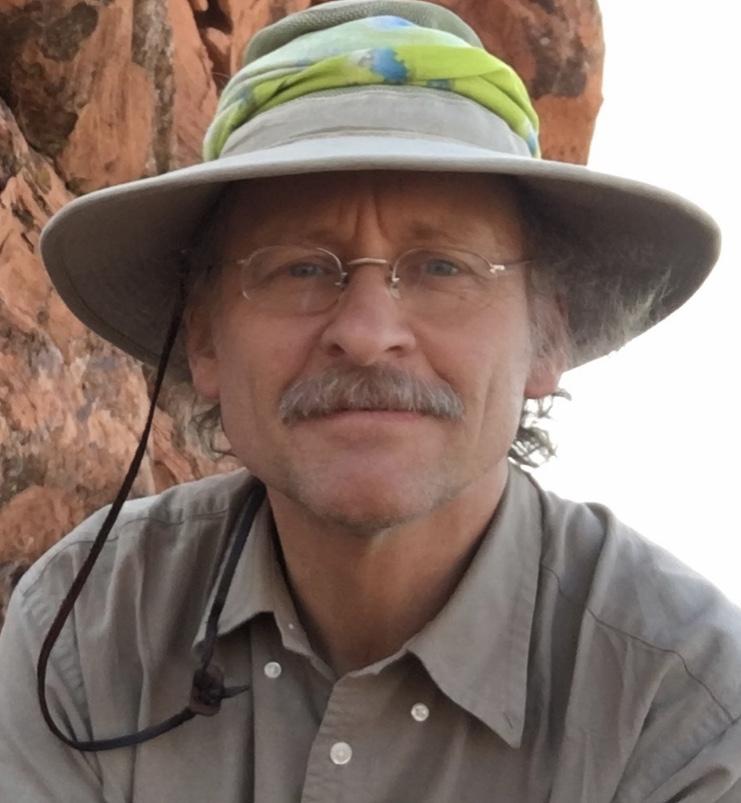
Source: NTNU
Krill immediately spotted the boulder standing out among everything else in the canyon and honed in on its abnormality in the landscape. However, he noticed something else, too.
Rare Geological Discoveries
In the geology world, it’s hard to be the discoverer of something new, much less groundbreaking. So much of the Earth has been documented, surveyed, tracked, studied, or photographed that anything someone thinks they “found” usually turns out to be already thoroughly examined in one research paper or another.
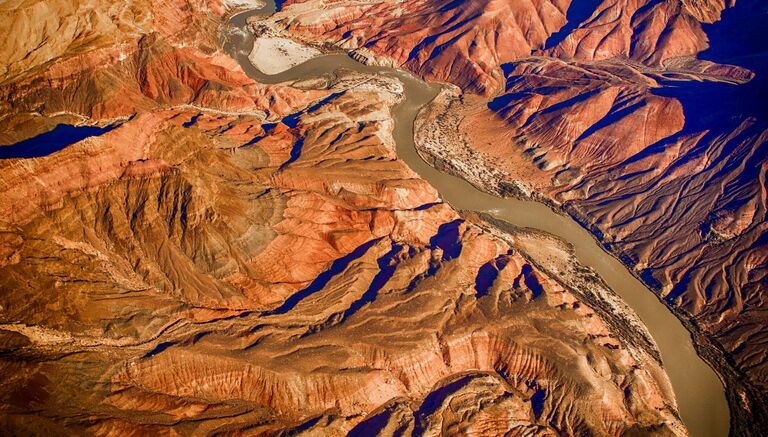
Source: Mark A Paulda/Getty Images
So, when a geologist actually comes across a unique feature that is completely new, or has the potential to be unheard of until that moment, it’s the same as suddenly finding a chest of buried gold coins. It’s rare, usually scoffed at, but amazing when it does happen. For Krill, he had found the geologist’s treasure chest of gold coins on this Grand Canyon boulder.
The Discovery Predates Dinosaurs
The boulder itself was not the prize. Instead, what was preserved in the stone of the boulder was amazing and worth the world’s attention. Krill now just had to get others to confirm his suspicion was correct. If he was right, the find easily dated back deep into the era of the dinosaurs at least.
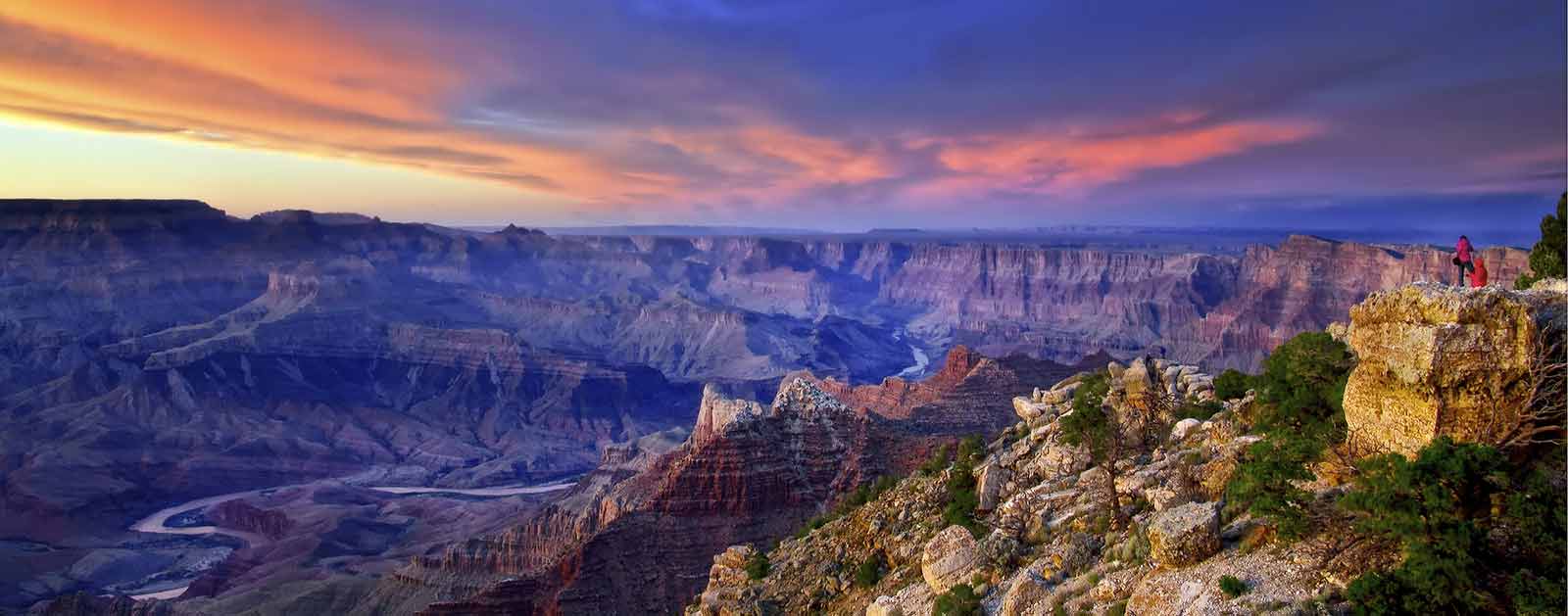
Source: American Rivers
The Grand Canyon’s geological history lies hidden within layers of rock. Compressive forces and high temperatures at first led to the formation of igneous and metamorphic rock. Next, sedimentary layers began to form. Each layer tells its own unique story. The ravine of the Grand Canyon didn’t begin to form until the end of the Cretaceous Period.
The Secret Is Revealed
As so often happens, it took a number of coincidences and special circumstances for Krill’s discovery to even be visible to the geologist. The sequence of crumbling, cracking, gravity and falling in just the right exposed way made the difference in making the boulder’s secret see the light of day for Krill to “discover” it.
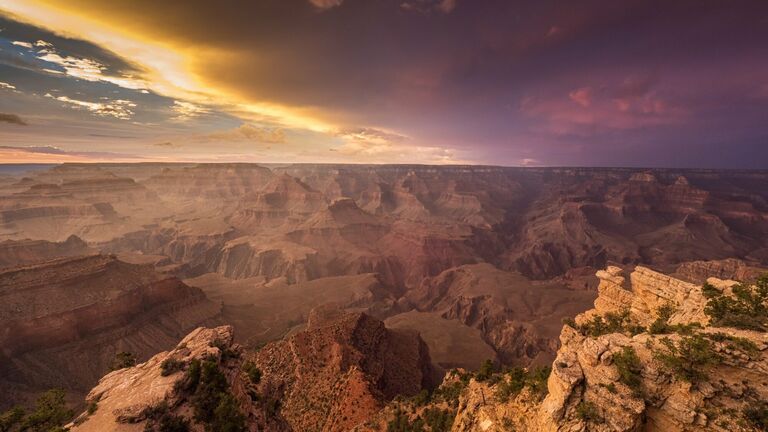
Source: torstenvelden/Getty Images
And it needed someone trained like Krill to see the significance—the average person was not likely to even notice the abnormality. In fact, had Krill not been the person to stumble upon the secret, it would have remained in the dark for another century or longer.
Two Billion Years of History
The Grand Canyon has long been a repository of secrets. Inaccessible caves can be seen but not explored. Yet, as erosion cuts through the layers of earth like a hot knife through cheese, this natural wonder’s geological finds come to the surface.
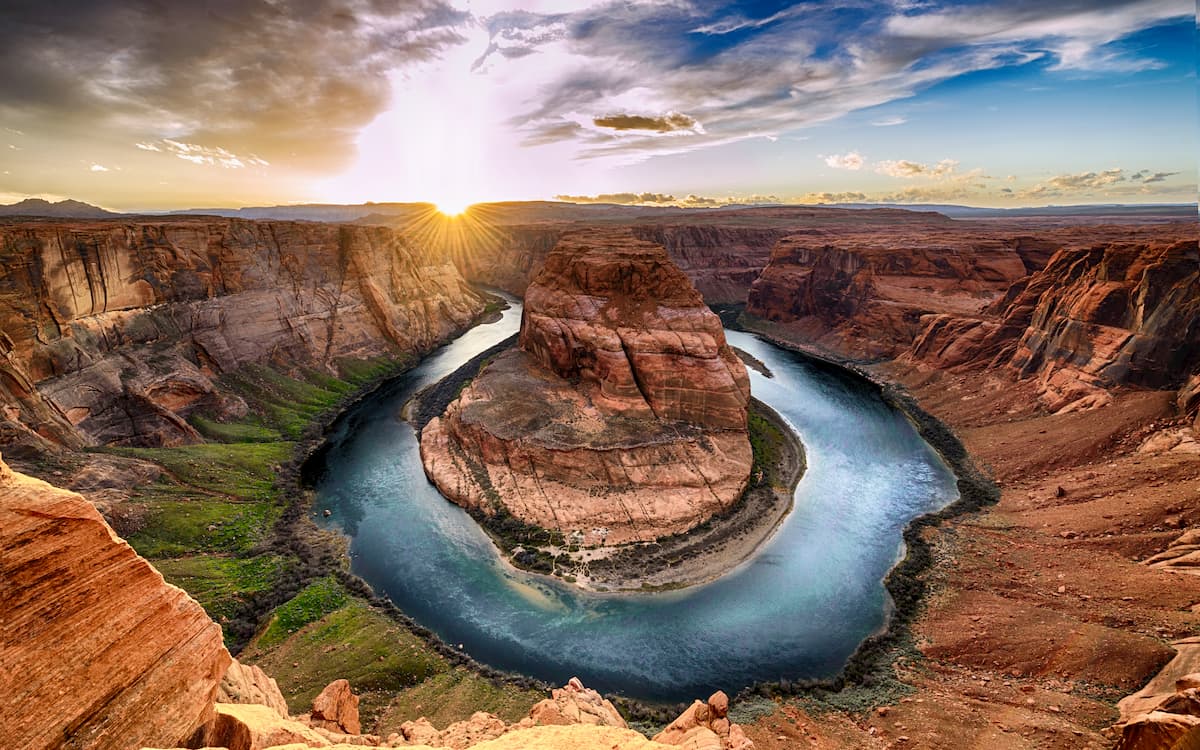
Source: Living Image
By average estimates, the canyon easily has a history of two billion years or longer, with the same river slowly but methodically eating away at the innards of the ravine and creating the chasm people know today. And all of it is captured as visible information in the rock and soil of the canyon walls.
Gradual Changes Over Time
What used to be lush, heavy vegetation-covered land in the Grand Canyon region disappeared over time, replaced by the desert and arid conditions we know today. Yet the signs of all that life and jungle are vivid and buried in the Canyon’s soil, captured as carbon layers between minerals. It’s likely that the boulder Krill ended up examining started to form sometime around the same era, two billion years ago.
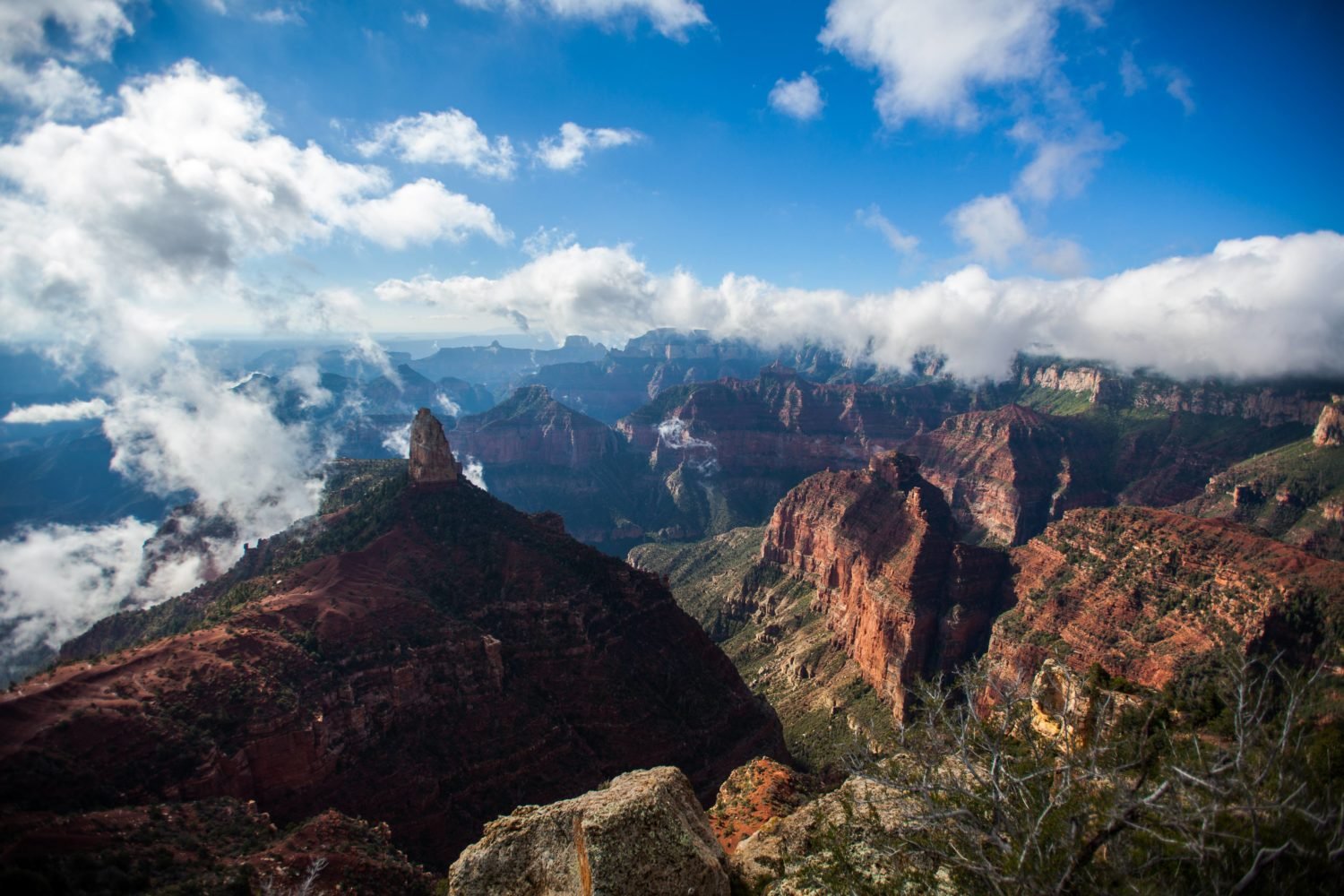
Source: Imgur
As more sedimentary layers were created with time, they became what geologists studied intently, their version of history books. Not only the type of minerals and what was buried in them tell stories, but how the sedimentary layer was created and deposited offers an explanation as well—it can reveal explicit details about ash fall, mud flows, water presence, and even life captured and fossilized in the minerals.
The Canyon Takes Shape
Long after the initial activity came the Cretaceous Period. It was about this time that many experts agree the Grand Canyon likely started being formed, at least in terms of something resembling the gap in the Earth we know today. At that time, it didn’t cover the 130,000 square miles the Canyon encompasses today.

Source: Britannica
Geologists believe the first stage needed for the Canyon to exist happened some 70 million years ago, when the Earth’s tectonic movement shoved the Colorado Plateau upward in relation to the rest of the region. That movement ultimately created a higher elevation point, providing the dynamics gravity would take advantage of later with water.
Water Plays a Critical Role
Water came in the form of rainwater and ice that froze during cold periods. The Rocky Mountains became the watershed, generating and building up much of the moisture. At first, the condensation had very little effect. However, with millennia to work with, Mother Nature can do amazing things.
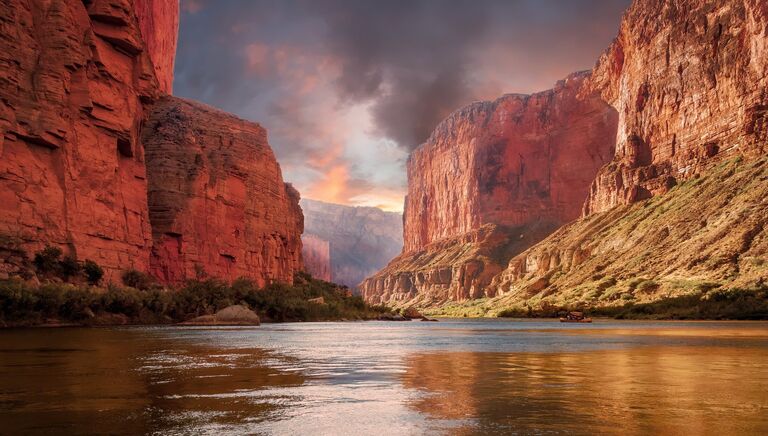
Source: Britannica
Eventually, mere puddles became creeks and creeks became rivers, more consistently cutting deeper, wider, stronger. No matter how hard the rock, water’s erosive nature and the temperature took a toll, wearing down even the strongest granite.
Erosion Leads to Geological Magnificence
Erosion also had an abrasive effect. As water tears apart rock, it breaks it down, turning rock into boulders and boulders into stones and pebbles. The oddments bang against the remaining rock and creates multiple points of impact, sometimes with significant force. Damage cascades into more damage, in turn creating more erosion.
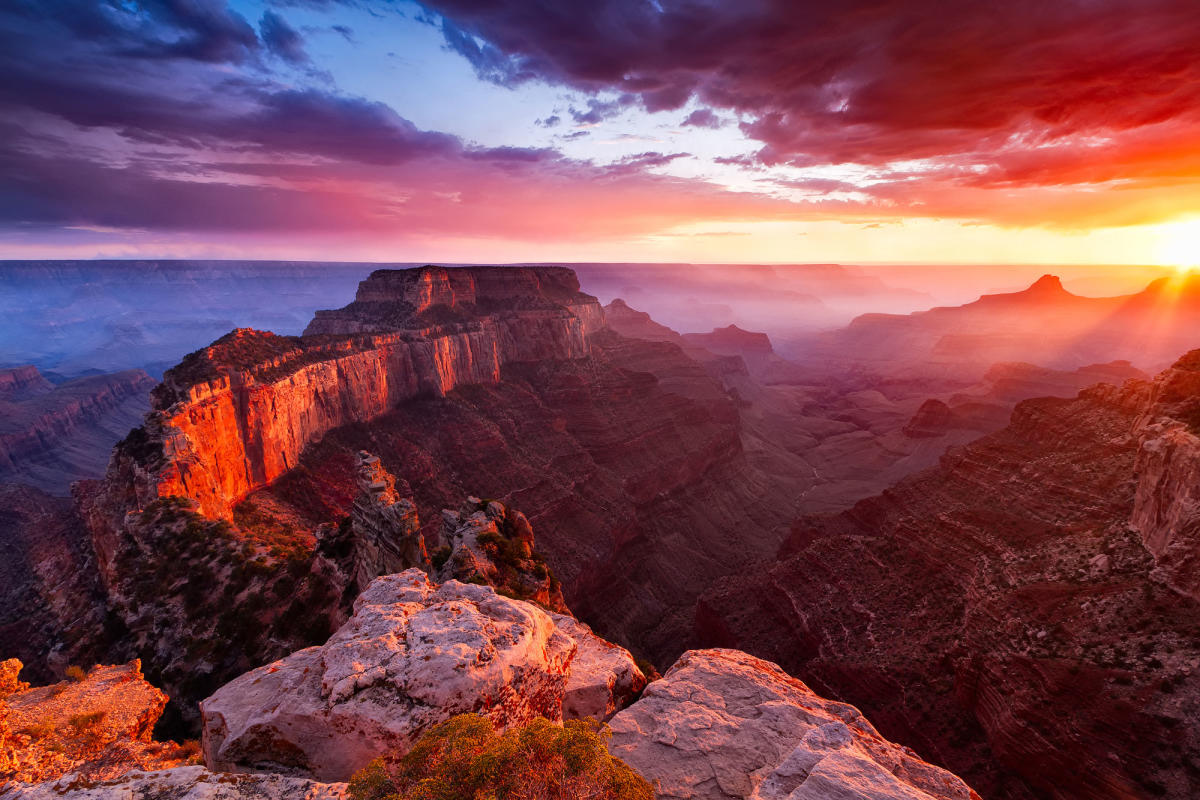
Source: Utah.com
The result is the carving effect, and created what we now know as the Grand Canyon with the Colorado River flowing through it. Today, the Grand Canyon is protected by national park and national monument designation. Internationally, it easily achieves status as one of the 7 Natural Wonders of the World.
A Changing Geological Marvel
Ancient peoples frequented the canyon on a regular basis, easily noting its significance in the landscape by then, even though humanity was still a blip in the geological history range.
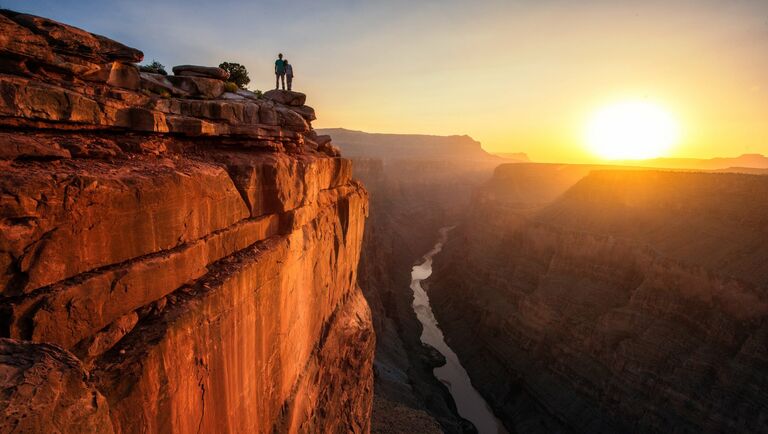
Source: Piriya Photography/Getty Images
Even more interesting, the canyon is not staying the same. While its current form was realized about 1.2 million years in the past, minuscule changes that add up over time continue to occur. Minor occurrences, including boulders leaving cliff walls and falling, led to Krill’s discovery.
Designation as a National Natural Treasure
The Grand Canyon region was first designated a “forest reserve” in 1919, an early federal government predecessor to what would later become a National Park designation. President Benjamin Harrison made the declaration, becoming the genesis for hundreds of thousands visiting the area since.
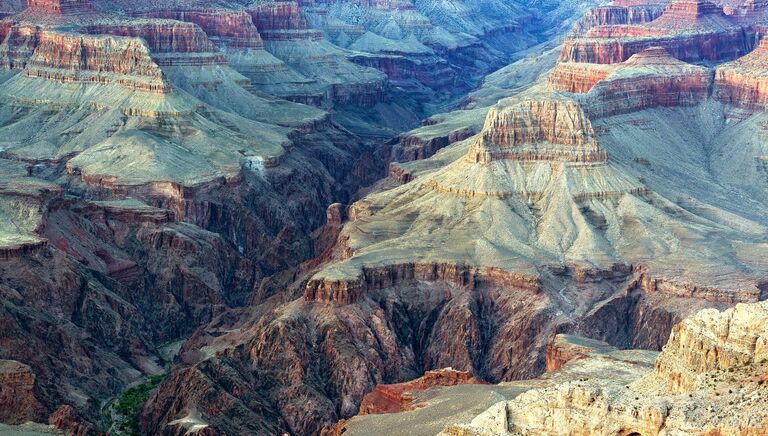
Source: Peter Cheung/Getty Images
Today, the amount of tourism in the region dwarfs anything from the beginning of the 20th century. Six million people visit the Grand Canyon annually. The only significant drop occurred in 2020 due to the COVID pandemic.
Grounds for Tons of Research
Tourists aren’t the only ones visiting though—researchers spend an extensive amount of time in the canyon on a regular basis. The area has been a subject of studies and research since before its designation, dating back to 1858.
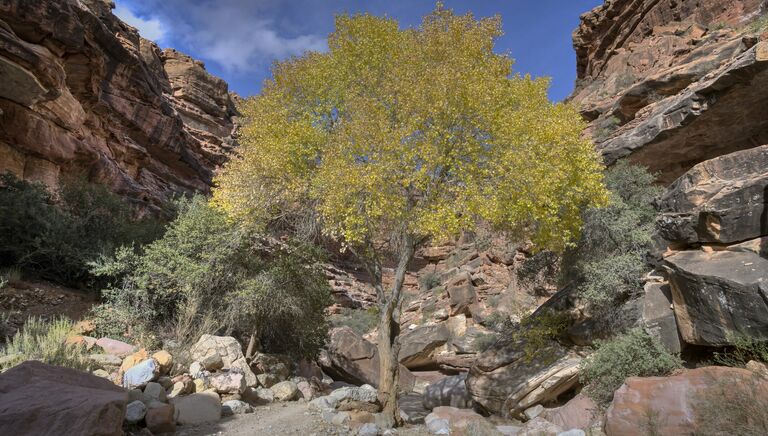
Source: Laura Hedien/Getty Images
Krill himself studied the area frequently as he developed his skills as a geologist. It’s this very body of work that confirms the geological features and formations in the area.
The Canyon's Prominent Tourist Draws
The Grand Canyon is easily recognized in photographs and films by some of its more famous spots. Thanks to an assortment of water movements, wind, arid conditions, and erosion, a number of locations within the national park have become go-to destinations for tourists from around the world.
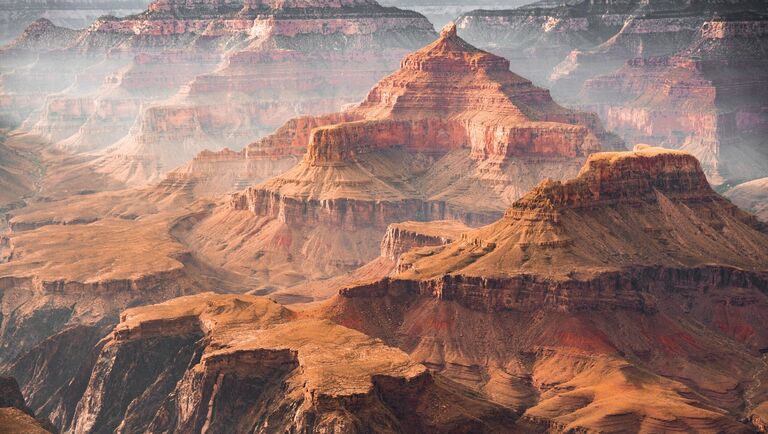
Source: Martin Kovács/Getty Images
For example, the Isis Temple prominently stands out against the landscape, reaching as much as 7,000 feet above the sea level elevation. Additionally, the Granite Gorge gets a lot of views, photographs and traffic as one of the iconic towering wall areas that the Colorado River incessantly moves through.
A Controversial New Study
It’s because of that river movement that new things appear every couple of years. However, academic researchers published a paper in 2014 stating the majority view of how the Colorado River formed the canyon seemed to be incorrect. Instead, the river’s behavior had moved in a very different way.
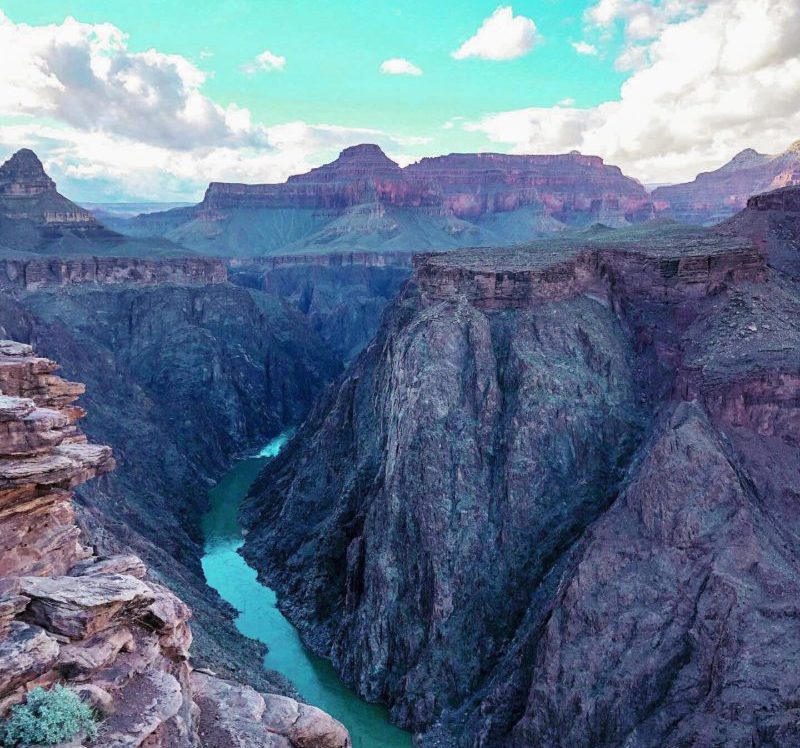
Source: Imgur
In short, the University of New Mexico study, led by geologist Karl Karlstrom, posited that original assumptions about the canyon’s age were overstated. In fact, they believed the canyon was younger, likely only starting forming 5-6 million years ago instead of the conventional view of 70 million years. Not surprisingly, the argument generated a lot of academic discussion and controversy.
A Discovery Older Than the Dinosaurs
Fossils are mineral leftovers from organic life, created from either animals or plants. Under the right circumstances, the organic material is preserved and eventually replaced by minerals, which is know as a fossil. The organism deconstructs and breaks down to carbon Interestingly, fossils can be created from impressions as well.
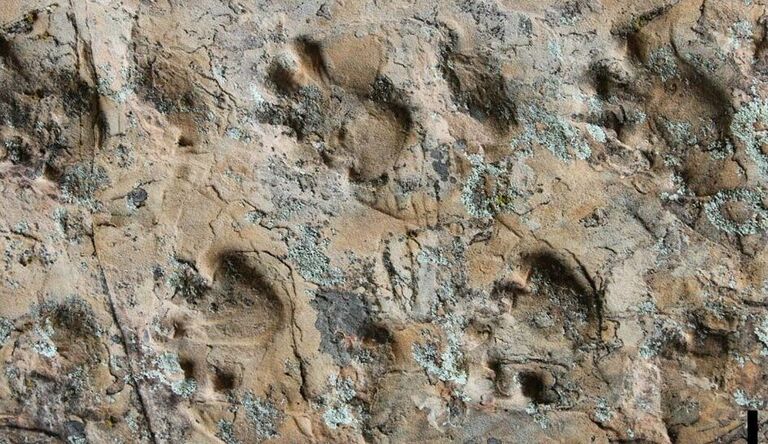
Source: NPS.gov
That was the case in 2019 when the National Park Service announced it discovered the footprints of a tetrapod in the Grand Canyon, a four-legged creature older than the dinosaurs. This particular species, an Ichniotherium, was never previously known to have lived in a desert region. Yet, if the area had already reached its arid state when it was fossilized, the finding would rewrite history about where this species could have lived.
Krill’s Historic Hike
Krill’s discovery proved that no amount of research can compare to time spent out in the field and walking the ground as the best way to understand the geology of the Grand Canyon. Despite how much research has already been collected, discoveries still pop up.

Source: NPS.gov
So, when Krill was leading a group of students through the canyon in 2016, the last thing he expected was to make a great geological discovery himself. The expedition set off to hike the Bright Angel Trail, and soon enough Krill was busy taking in the sights and looking at things with a geologist’s eye.
Noticing a Strange, Misplaced Rock
The out of place boulder was easy enough to spot, making it a natural attraction to a casual observer on the trail. However, for Krill, there was a lot more going on, and he wanted a closer look at the boulder’s story. His eye caught an aberration in the stone’s surface that didn’t look right and definitely not geological.
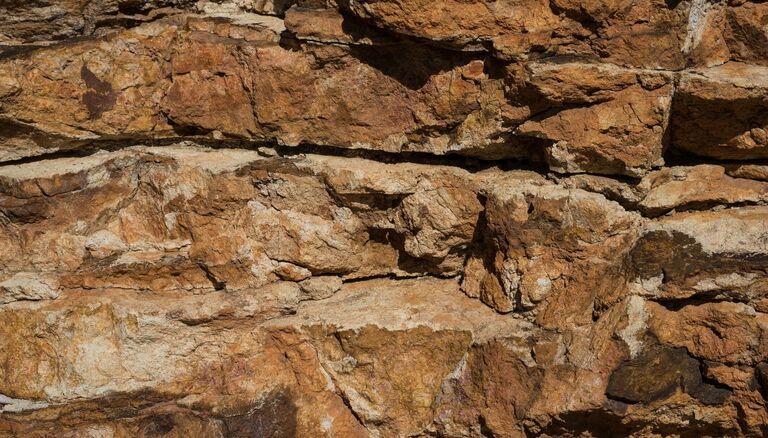
Source: Simon McGill/Getty Images
Instead, the boulder’s surface had a pattern on it that looked like it was factitious. In addition, its composition gave away its source—the rock type was a clear match to the Manakacha Formation, higher up on the trail’s cliff wall.
The Manakacha Formation
For geologists, the Manakacha Formation is a playground. Though mud and soft Earth in its original form millions of years ago, the mudstone and limestone now tends to be a treasure trove of fossils and captured material preserved in the ancient mud.
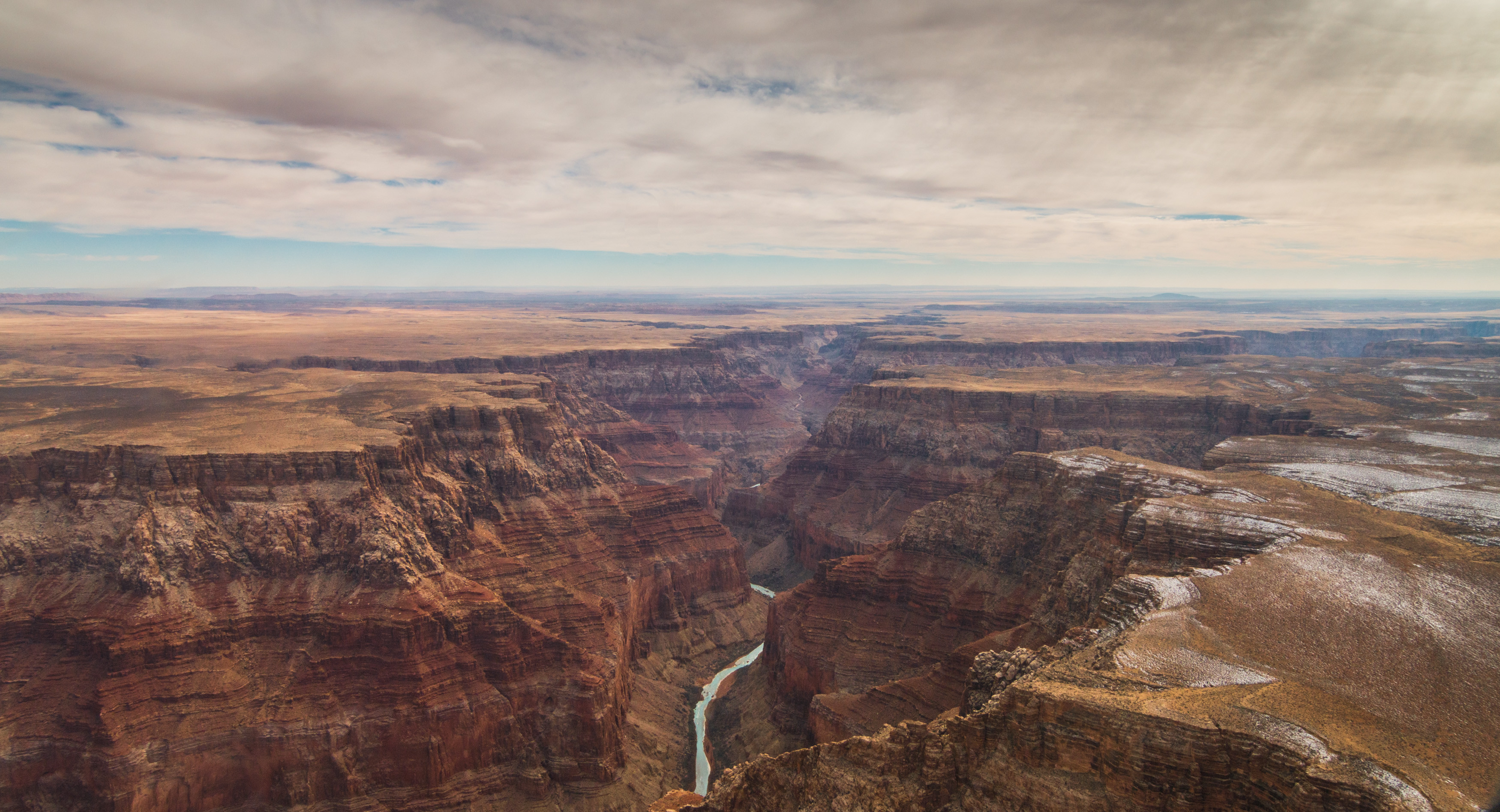
Source: Imgur
As it dried out, the layer turned to rock. Over time, that sheet rock eroded and broke apart, creating the boulder.
Finding Footprints on the Surface
What caught Krill’s eye on the boulder’s surface was a marking that looked like several footprints. In fact, he discovered a pattern of footprints fossilized in the boulder. Krill took a number of photographs and then sent one of them to a paleontologist for confirmation.
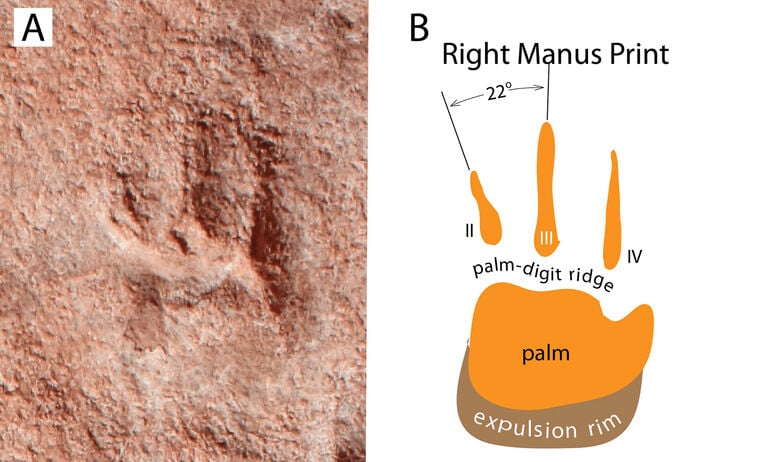
Source: PLOS
Upon examination, Krill’s discovery was dead on—he had had indeed discovered a unique and actual specimen of a fossilized footprint track. The finding was confirmed two years later in peer-reviewed academic research by the Society of Vertebrate Paleontology.
Rewriting History
The importance of the finding took a year or two to be fully understood. Paleontologists who studied the boulder and formation intently detailed their findings in the fall of 2020, again crediting Krill with a major find. As it turned out, the footprints involved were far older than previously thought.
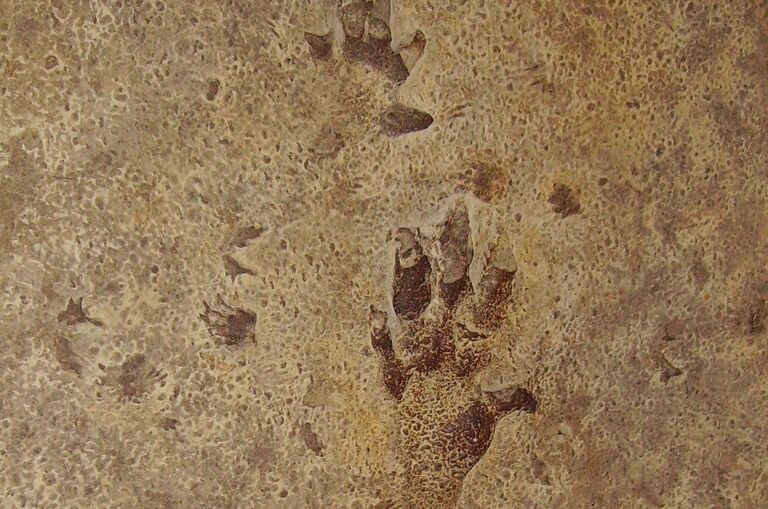
Source: Ballista
Based on the rock formations and material the prints were found in, they were estimated to be as old as 313 million years—far earlier than previously known for this type of creature to have existed, much less in the Grand Canyon region. It was a unique find that literally rewrote the history books.
The Incredible Discovery That Changed History
The tracks are some of the oldest examples of life on Earth based on dating and research. Though they couldn’t identify the creature, scientists concluded it was definitely reptilian, a vertebrate type of creature moving on four legs, and living in an arid location.
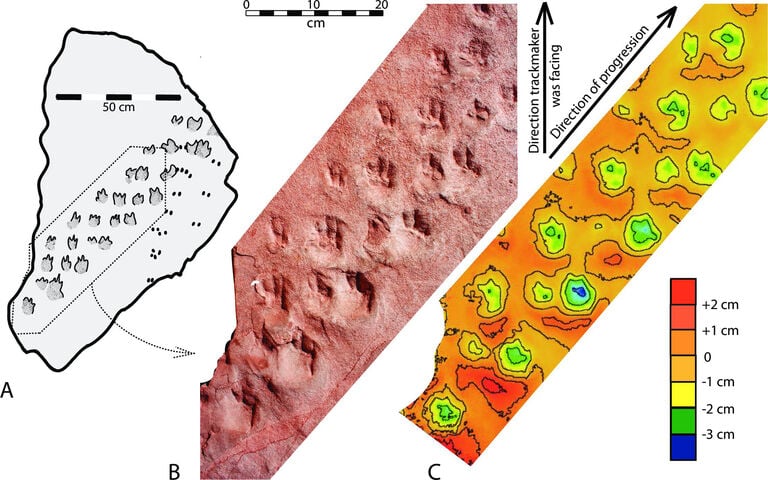
Source: PLOS
For today’s reader, it’s a bit hard to understand how dinosaurs long depicted being in jungles ended up in the desert arid regions of Arizona. Part of the perspective problem comes from the fact that we think of the world as it is today, not as it was.
Perfectly Preserved Prints
The continents were far closer together and compacted, with the area that became Arizona being a lot closer to the equator at the time. Somewhere during that time period, a pair of reptiles that were big moved over the mud area that ultimately became frozen in time and preserved as a fossil.

Source: AFP/Getty Images
It’s likely that instead of eroding flat, the tracks were subsequently covered up by water and more mud, which caked and preserved their form. That turned into rock over the ages and became fossils in the Manakacha Formation. These footprints were naturally preserved, just waiting to be discovered to reveal the interesting history of the past.
Analyzing the Clues
An academic debate continues to rage back and forth as to whether the reptiles tracked through the area are the same time or were separate tracks. Were there two separate reptiles or only one?
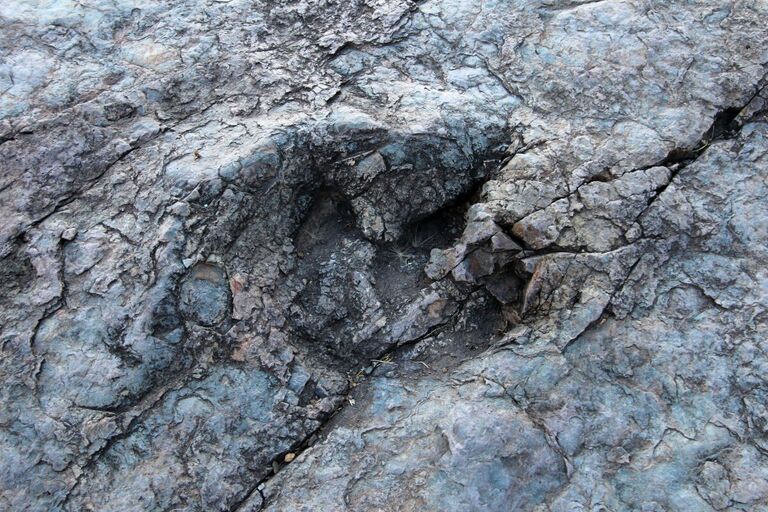
Source: cicloco/Getty Images
No one really knows for sure since nobody was alive to observe anything at the time that this creature roamed the earth. All we have to go by is the fossilized evidence found in the stones. From there, it’s up to geologists and historians to infer what happened.
How the Creature Walked
However, all accounts do agree that there are two distinct sets of footprint tracks preserved in the boulder. And the mechanics of the walk pressure, impression, gait, and depth of the print say a lot about the type of creature that caused it.
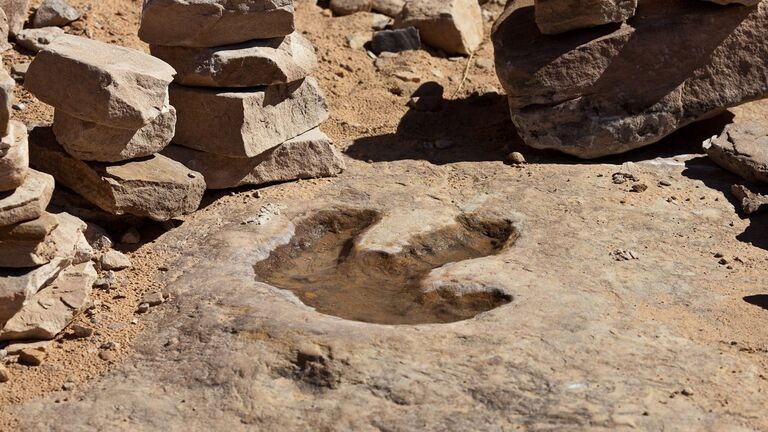
Source: Greg Willis
For example, some of the research pointed out that the direction the reptile walked was in a lateral form – like a crab on the sand moving sideways – versus moving directly forward.
The Great Geological Debate
Yet, despite all the academic research published since Krill’s discovery, the boulder and its secret are still hotly debated. Much of the disagreement centers around exactly what kind of reptile made the tracks, how they were made, and what one should infer from their shape and presence.
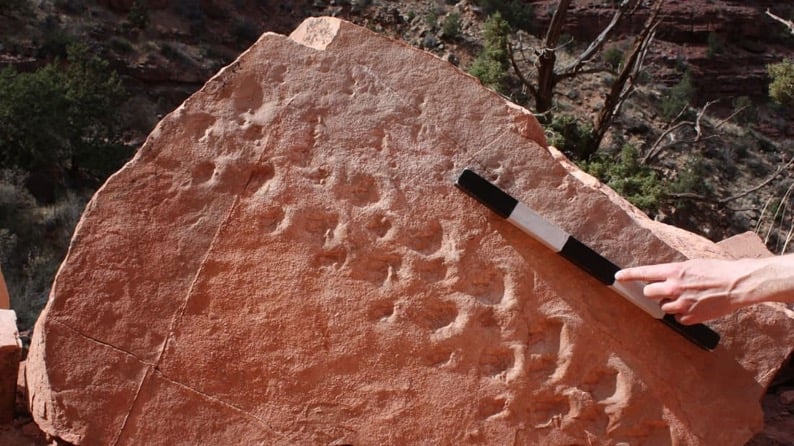
Source: NPS.gov
It got to the point that many of the academics often have to start off by pointing out that multiple opinions exist and continue to evolve.
An Ancient Secret Hidden in Plain Sight
Commoners hiking down the Bright Angel Trail just see a big boulder that stands out as a visible landmark to stop and catch one’s breath. If not looking for it, the majority of hikers walk right past without even realizing what they have missed.
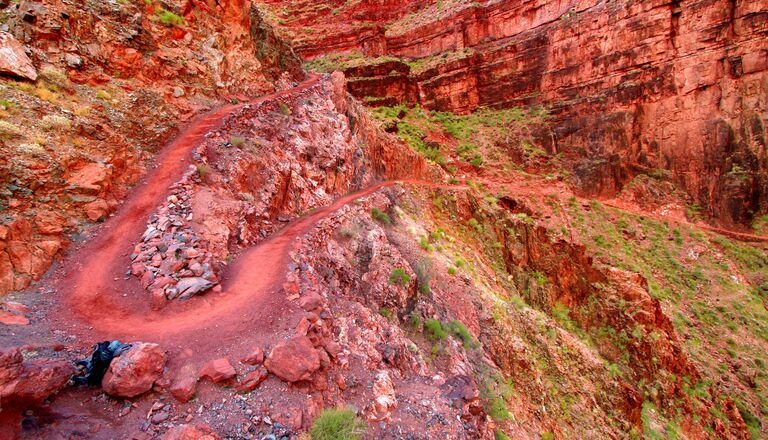
Source: Wirepec/Getty Images
On the other hand, visiting geologists, paleontologists and other researchers regularly make a point to stop at the boulder to get a closer look at Krill’s discovery and prints.
A Discovery That Will Go Down in History
For the scientists, the prints might as well have a blazing neon sign posted over them, enticing all to come visit and check it out. The boulder is truly that exciting of a find, and with its history, geologists love to visit.
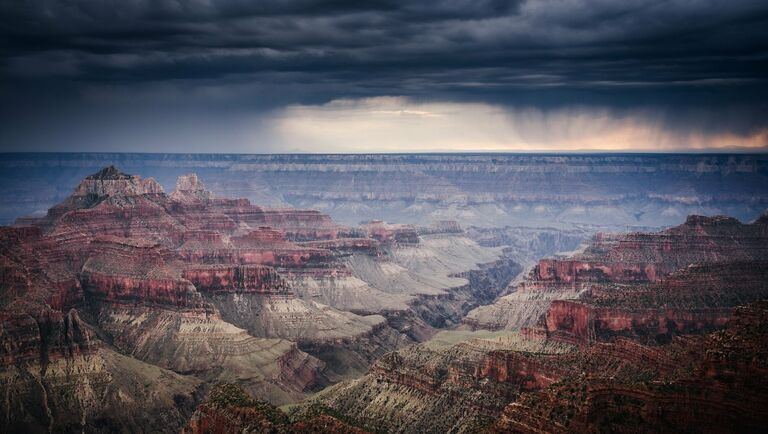
Source: Posnov/Getty Images
As for Krill, his discovery cemented his name in recorded history—at least in the geology world that will be there long after he has retired from the field.
See Krill's Discovery for Yourself
It’s incredible that discoveries like this from millions of years ago can still be made today. We’re fortunate that geologists with keen eyes, like Krill spend the time studying to be able to identify these discoveries which help inform us of life before we roamed the earth.

Source: NPS.gov/Imgur
Researchers still debate the prints discovered in the boulder. But, if you want to see them for yourself, the boulder is now a tourist attraction that hikers and geologists alike can visit and enjoy.
